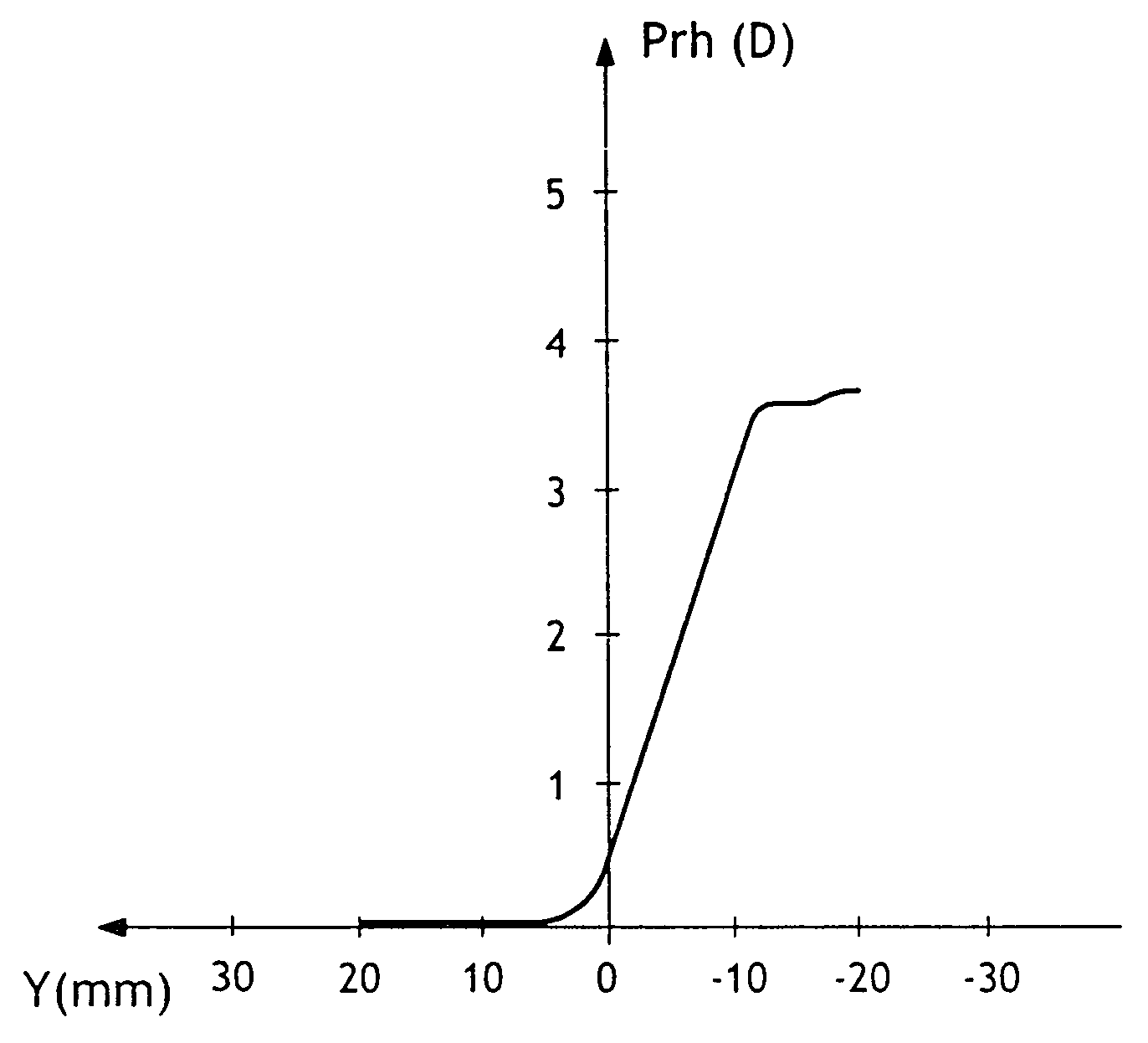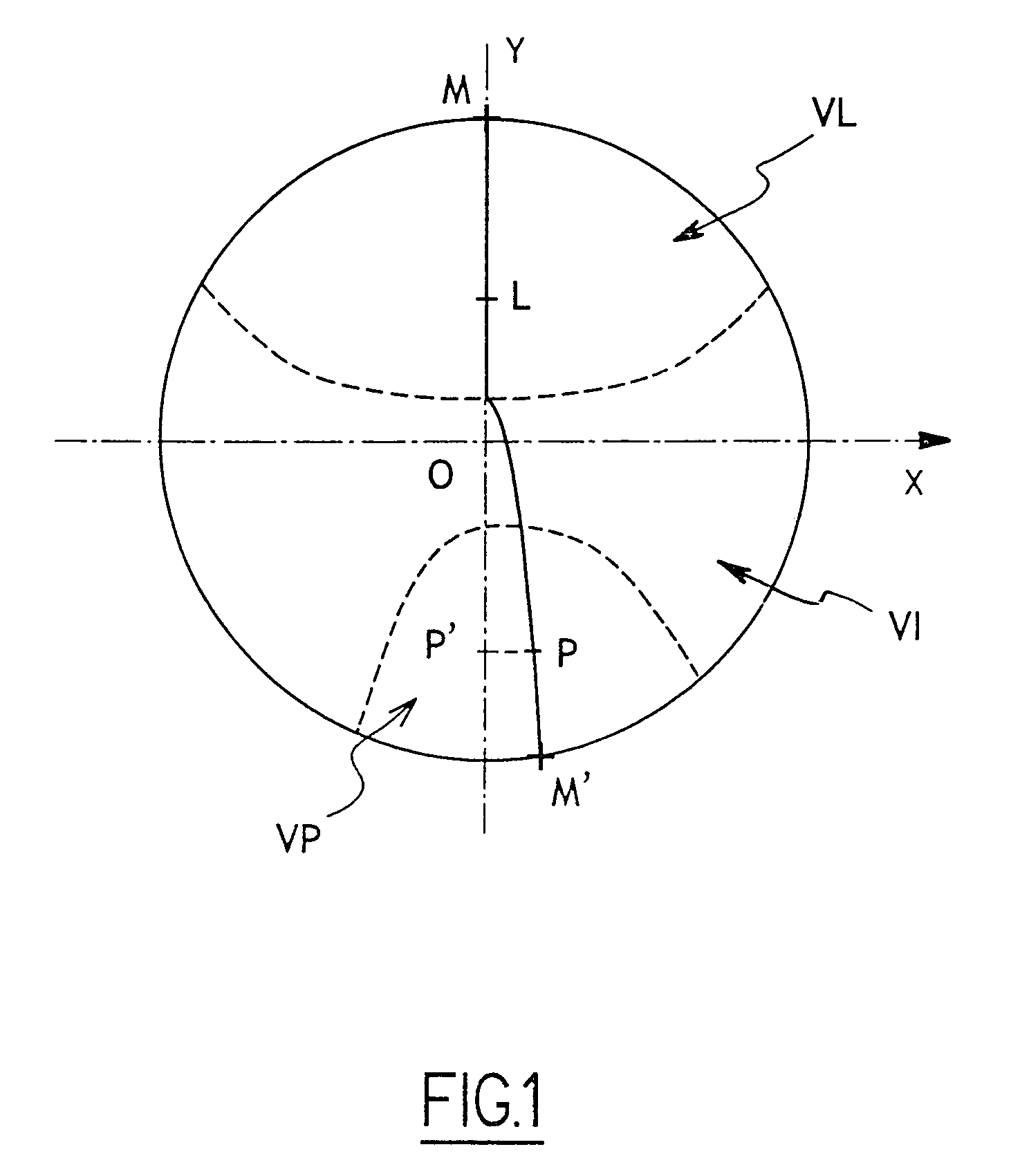Ophthalmic lens with progressive addition of power and prism
- Summary
- Abstract
- Description
- Claims
- Application Information
AI Technical Summary
Benefits of technology
Problems solved by technology
Method used
Image
Examples
Embodiment Construction
[0039]In the context of the present description, the following definitions are used.
[0040]The optical correction power of a correcting ophthalmic lens is defined by its spherical, cylindrical, and prismatic refractive power properties. It will be understood that such an optical definition gives a scope that is more general than a definition that is purely in terms of area: it defines the overall effect of the refractive power of the lens on an incident light ray, that results from the algebraic sum of the refractive powers acting in succession on the front and rear faces of the lens. It will be understood that such an optical definition covers a plurality, and even an infinity, of combinations of pairs of surfaces producing the same overall optical refractive effect, as set out in the document “Theoretical aspects of concentric varifocal lenses” by W. N. Charman, in Ophthal. Physiol. Opt. Vol. 2, No. 1, pp. 75–86, 1982, published by Pergamon Press for the British College of Ophthalm...
PUM
 Login to View More
Login to View More Abstract
Description
Claims
Application Information
 Login to View More
Login to View More - R&D
- Intellectual Property
- Life Sciences
- Materials
- Tech Scout
- Unparalleled Data Quality
- Higher Quality Content
- 60% Fewer Hallucinations
Browse by: Latest US Patents, China's latest patents, Technical Efficacy Thesaurus, Application Domain, Technology Topic, Popular Technical Reports.
© 2025 PatSnap. All rights reserved.Legal|Privacy policy|Modern Slavery Act Transparency Statement|Sitemap|About US| Contact US: help@patsnap.com



